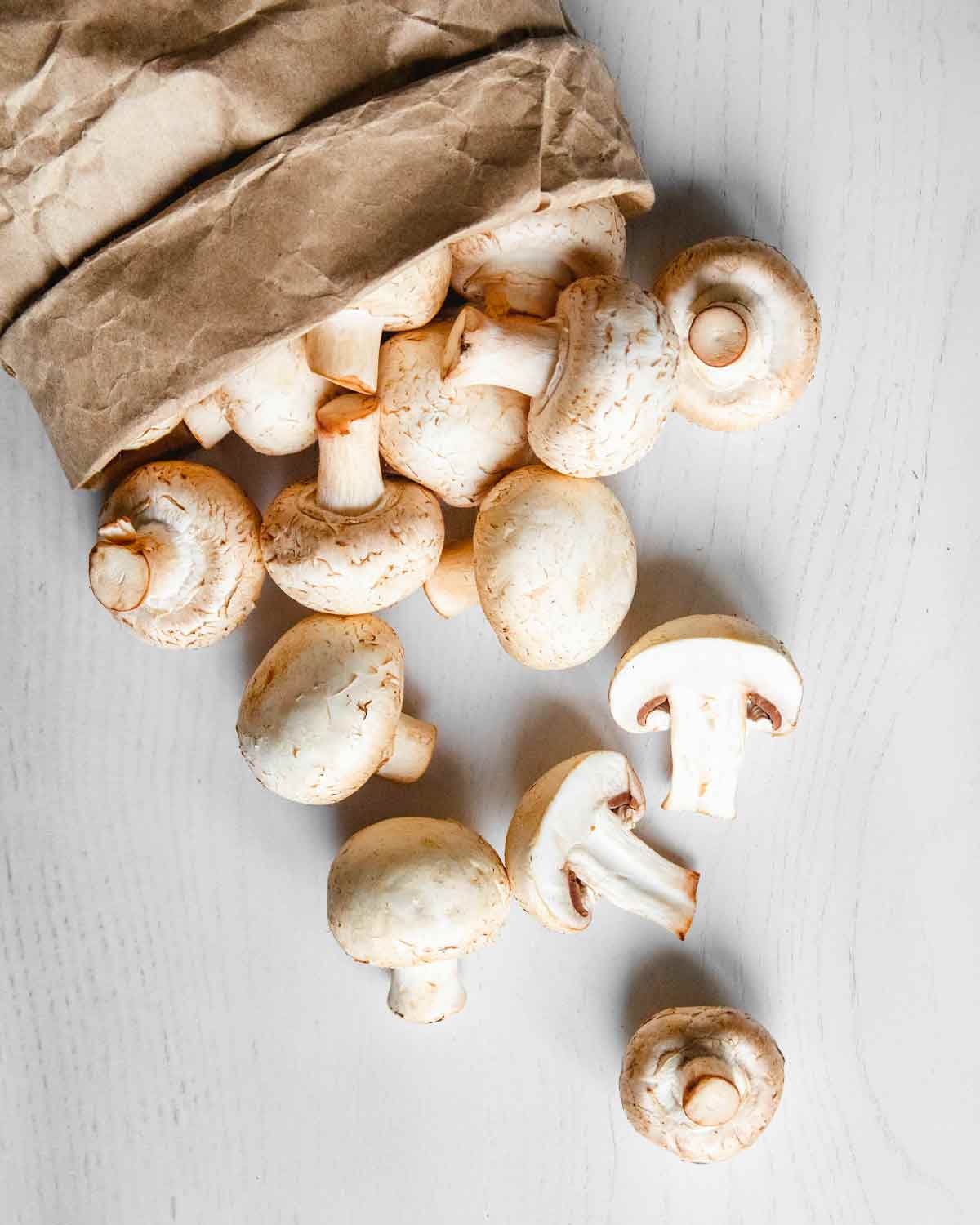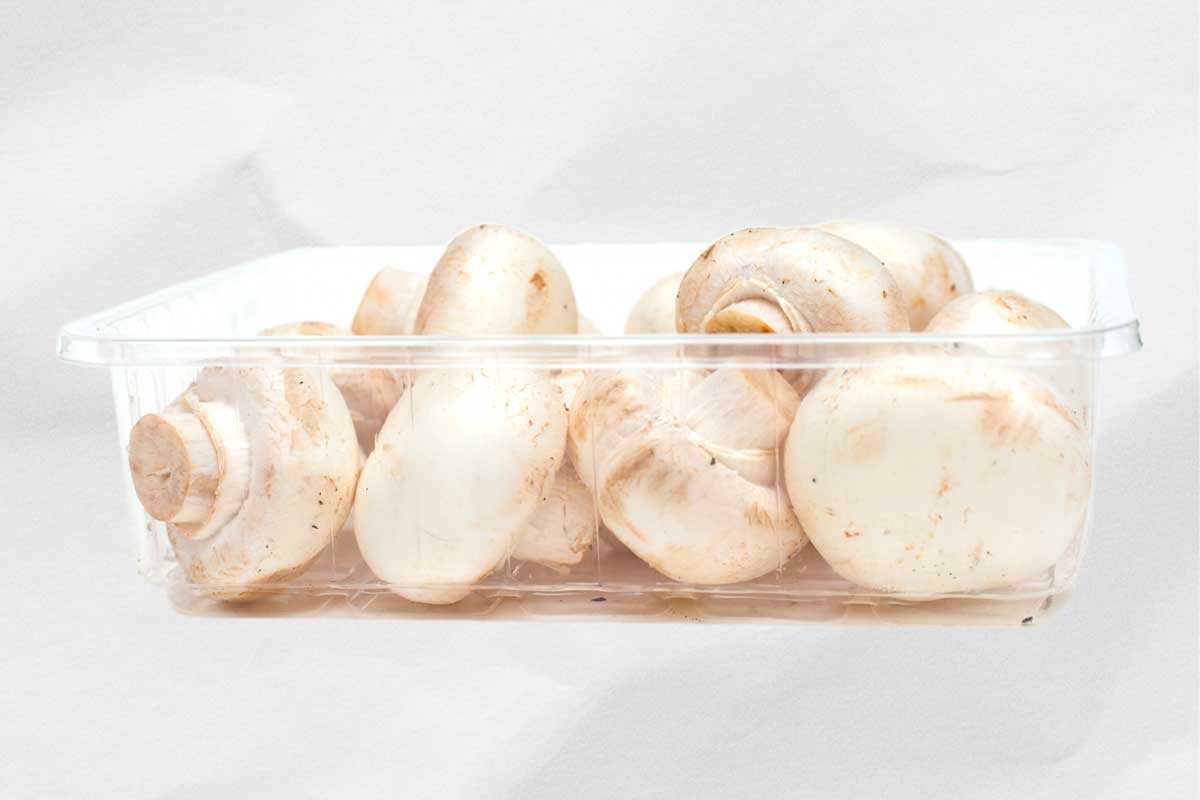
While at least edible mushrooms won’t give you a bad trip if they go off, they’re still most remarkable at their prime and you want to keep those umami bombs fresh as you can. But how exactly do you keep those enigmatic and precious little fungi from turning slimy once you get them home and before you slap them on pizza or toss them in soup or even wrap them in foil?
Jump To
They’re not plant. Nor animal. But as with most fresh and unprocessed foods, the best advice for storing mushrooms is to not store them and instead eat them as soon as possible. Once harvested, they’re not going to age well like a sourdough starter or pickles or red wine. Here’s a little morel support (see what we did there?) for what to do and not do.
How to Wrap Mushrooms
Mushrooms are nearly 90% water, so any additional moisture is just begging for moldy baby Bellas.
If you’ve purchased pre-packaged mushrooms, it’s actually best to leave them that way until you’re ready to use them. They’ve been packaged with a lot of forethought to protect the product, so take advantage of that and just slip them in the fridge. And yes, they do need to be refrigerated. A hot, humid kitchen is a death sentence for fungi.
If you’ve handpicked your own ‘shrooms, it’s still simple. If the store or farmers’ market offers paper bags, all you need to do is fold over the top of the bag loosely filled with ‘shrooms and place them in the main compartment of your refrigerator. The paper’s absorbent nature will rid the mushrooms of excess moisture. You can line the bag with a clean paper towel before storing to give yourself a little extra insurance. No paper bags? Instead, remove them from the plastic bag, wrap the mushrooms in a paper towel, and place them in a resealable plastic bag with the top left unsealed.
Where to Store Mushrooms

Where you store mushrooms is also pretty important. The short answer is the middle shelf of your fridge, nestled in a delicate slumber, surrounded by a not-too-moist cloud. Okay, maybe not. But don’t store them in the crisper drawer; it’s too moist in there and that’s what you’re trying to avoid.
Something else to avoid? Strong odors. Your mushrooms will absorb those smells faster than you can say matsutake. And don’t even think about putting that block of Stinking Bishop cheese—or anything else, for that matter—directly on top of that brown paper bag of preciousness. Not only will your little lovelies pick up the, er, aroma, but you’ll end up with squished and bruised mushrooms that will turn bad even faster.
When to Throw Out Your Mushrooms
It’s frustrating to throw food out but sometimes it happens. “The surfaces of the mushroom should be dry, but not dried out, and appear plump” advises the American Mushroom Institute.
The top reasons to ditch your mushrooms are changes in texture, color, and smell. Fresh mushrooms have an earthy and sweet scent; a fishy smell is a definite sign that you won’t want them for dinner. Slimy ‘shrooms are a common complaint; they’re not necessarily dangerous at this point, but it is a good practice to not risk it and replace them. When they do start to darken, it’s time to use them or lose them as they’re on their way out.
Keep in mind that the length of freshness can depend on the type of mushroom. Delicate varieties like enoki, button, or trumpet need a little more immediate attention, while sturdier portobellos and shiitakes can last a little longer.
When to Clean Mushrooms
Another common conundrum—to wash or not to wash your ‘shrooms? That’s up to you as there’s no definitive answer. According to the Mushroom Council and the FDA “you should wash all produce thoroughly under running water before preparing and/or eating, including produce grown at home or bought from a grocery store or farmers’ market.” But remember how we told you that mushrooms are nearly 90% water and that you shouldn’t add moisture? Rest assured, a quick rinse in the moments before cooking your mushrooms is okay. But do not expose them to water before you store them.








